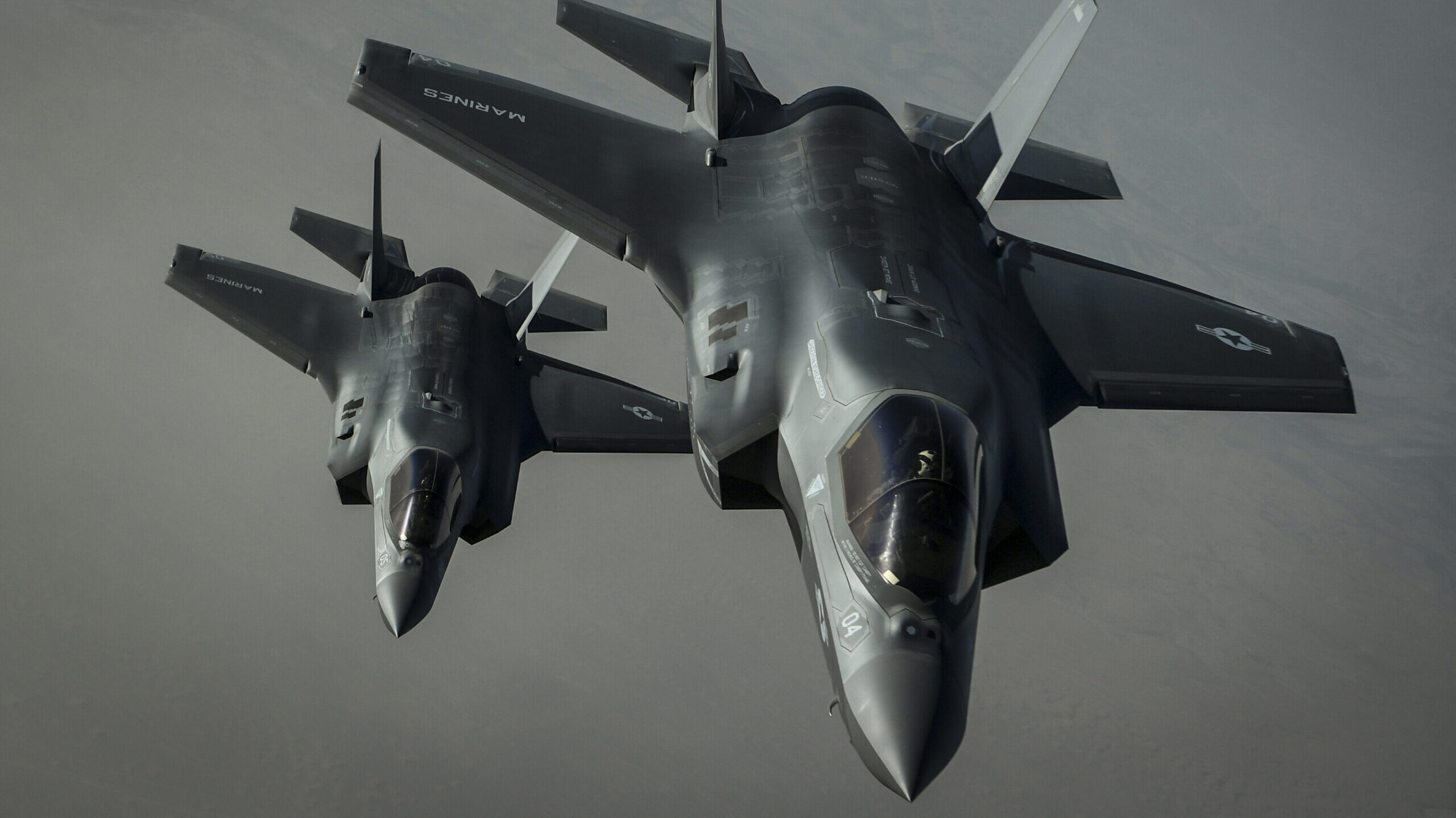
Two U.S. Marine Corps F-35B Lightning II’s assigned to the Marine Fighter Attack Squadron 211, 13th Marine Expeditionary Unit, fly a combat mission over Afghanistan, Sept. 27, 2018. (Staff Sgt. Corey Hook/US Air Force)
WASHINGTON: The Pentagon has yet to approve a new schedule laying out when F-35 Joint Strike Fighter goes into full rate production, but it won’t be until after summer 2023 at the very earliest, the Pentagon’s program executive said today.
At the heart of the issue is the Joint Simulation Environment — a virtual testbed that allows the F-35 to go up against the most high-end Russian and Chinese threats. Only after the Lockheed Martin-made F-35 conducts 64 test runs in the JSE will it be allowed to proceed from operational tests to a “Milestone C” decision, where the Pentagon’s top acquisition authority declares the jet ready for full rate production.
After multiple delays due to technical problems and the COVID-19 pandemic, the Pentagon is finally conducting component validation of the JSE, which should wrap up this May, F-35 program executive officer Lt. Gen. Eric Fick told reporters at a roundtable. System verification tests are slated to occur through this fall, allowing the F-35 to finally conduct its 64 JSE tests in the summer of 2023.
Fick said that the current JSE test schedule eliminates the possibility of a Milestone C declaration in fiscal 2022, which ends this September. And while he wouldn’t rule out a potential full rate production decision by the end of FY23, he acknowledged that “there’s not a lot of leeway” in the current schedule, and that if the F-35’s simulation tests “were to slip by any appreciable margin” it could lead to further delay.
The Pentagon had initially planned to approve the F-35 for full-rate production at the end of 2019, and has had to continually push out its plans. Currently, there is no date set for Milestone C.
In December, Fick said he hoped to finalize a new Milestone C date by the end of January, but he said today that the Pentagons’ acquisition and sustainment authority has not signed off on a new program baseline schedule.
The Joint Simulation Environment is conceptualized to allow fighter jets to train against high-end threats that would be impossible to simulate in live training — think large, operationally relevant numbers of advanced Chinese or Russian air defense systems or enemy stealth fighters equipped with high-end electronic warfare systems, sensors and weapons.
The environment must be able to accurately simulate not only the radar cross section, weapons and sensors of the F-35 but also all of the other aircraft and weapon systems in the environment, Fick said.
“It’s not like, you know, Candy Crush Saga or Wordle, or even the video game your kids play,” he said. “It doesn’t just have to look right, it has to be right at the digital level.”
Although the full rate production decision is a symbolically important one that signals that a program has worked through the problems of development and is ready for operations, in some respects the F-35 program, which took its first flight back in 2006, is already functioning as if Milestone C has been declared.
In 2021, Lockheed delivered 142 F-35s, and is ramping up production to hit a max of 156 jets a year by 2023. All three US services that fly the fighter — the Air Force, Navy and Marine Corps — have declared the F-35 ready for combat, and the jet has been periodically used to destroy weapons caches and key infrastructure held by the Islamic State terrorist group. The jets have been sold to a number of allied nations, and Israel revealed this week that a pair had downed two Iranian-made drones in 2021.
Currently, a total of six American F-35s are deployed to Estonia, Latvia and Romania, as NATO hopes to deter Russia from further aggression in Eastern Europe as its war with Ukraine rages.
If American F-35 pilots in the region were attacked by Russian jets during their deployment, Fick said that they would be well-prepared despite the F-35 not having gone through testing in the Joint Simulation Environment.
“We understand the threats that the F-35 is going up against today,” Fick said. “We understand the threats largely propagated throughout Europe, and those were the threats that the airplane was developed to counter over the course of the last 20 years or more. And so I think we’re very confident in our aircraft’s ability to fight in that [area of responsibility].”
Amid its own war, Israel sending Arrow 3 air defenses to Germany in 2025
“When we saw what was happening with Ukraine … we passed on a clear message that we remain committed to German national security …,” former Israeli ambassador to Germany Jeremy Issacharoff told Breaking Defense.



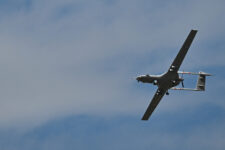
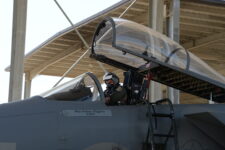
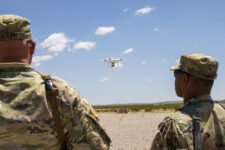

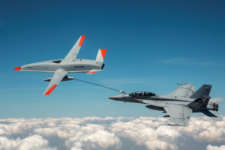





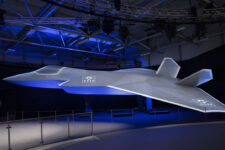



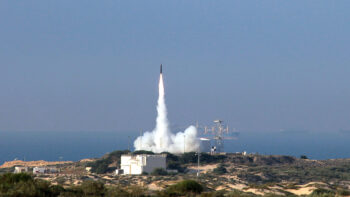

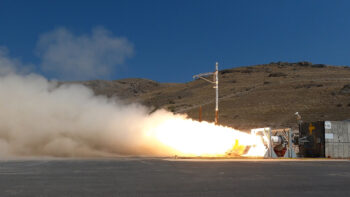


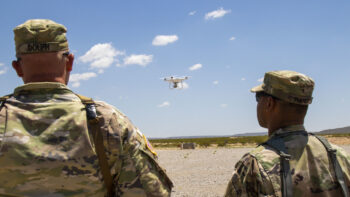


![E-2D_AR_1[1]](https://breakingdefense.com/wp-content/uploads/sites/3/2024/10/E-2D_AR_11-350x233.png)
